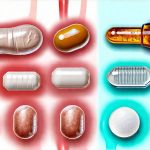Bladder discomfort in women is surprisingly common, often manifesting as a persistent urge to urinate, pain during urination, or a general feeling of irritation within the bladder area. While many associate these symptoms with urinary tract infections (UTIs), chronic issues can stem from inflammation or sensitivity of the bladder lining itself – a condition that requires a different approach than simply treating an infection. Understanding the delicate nature of this lining and identifying potential irritants are crucial first steps towards relief. This article aims to explore gentle, supportive strategies to soothe bladder irritation, focusing on lifestyle adjustments, dietary considerations, and self-care practices. It is important to remember that persistent or severe symptoms should always be evaluated by a healthcare professional for accurate diagnosis and personalized treatment plans.
The bladder lining, technically called the urothelium, is a complex tissue designed to stretch and contract with each fill-and-empty cycle. This unique structure allows the bladder to hold urine without being absorbed. However, this sensitive lining can become inflamed or irritated by various factors, leading to discomfort and impacting quality of life. Common culprits include harsh soaps, certain foods, stress, and even changes in hormonal levels. Identifying these triggers is often the key to managing symptoms effectively, though it can require a process of elimination and careful observation. The goal isn’t necessarily to eliminate all potential irritants – that’s often unrealistic – but rather to minimize exposure and support the natural healing processes of the bladder.
Understanding Bladder Irritation & Identifying Triggers
Bladder irritation doesn’t always have a clear-cut cause, which can make diagnosis challenging. It’s important to distinguish between acute inflammation, often associated with infection, and chronic irritation, where symptoms persist even after an infection has cleared. Chronic irritation is frequently linked to interstitial cystitis (IC), also known as painful bladder syndrome, but it can also arise from other factors like allergies or sensitivities. The challenge lies in pinpointing what specifically causes the flare-ups for each individual. A detailed symptom diary can be incredibly helpful – noting everything consumed, activities undertaken, and stress levels experienced alongside any changes in bladder symptoms. If you’re unsure whether your discomfort is related to a UTI or another cause, consider reading how mild burning may point to bladder issues.
Many everyday substances can act as irritants. These aren’t necessarily harmful to most people but can significantly impact those with sensitive bladders. Common triggers include:
– Caffeine (coffee, tea, soda)
– Alcohol
– Citrus fruits and juices
– Spicy foods
– Artificial sweeteners
– Tomatoes and tomato-based products
– Carbonated beverages
Beyond diet, external factors play a role too. Harsh soaps, bubble baths, feminine hygiene sprays, and even tight clothing can irritate the sensitive tissues around the bladder and urethra. Stress is also a significant contributor; chronic stress weakens the immune system and can exacerbate inflammation throughout the body, including in the bladder. Recognizing these patterns allows for proactive management and lifestyle adjustments to minimize discomfort. If you are struggling with identifying triggers, is it gas or bladder discomfort can help differentiate symptoms.
Dietary & Lifestyle Adjustments for Soothing Relief
A cornerstone of managing bladder irritation is adopting a supportive diet. While there’s no one-size-fits-all approach, many women find relief by following an elimination diet – temporarily removing potential irritants from their diet and gradually reintroducing them one at a time to identify specific triggers. This requires patience and careful observation but can be incredibly empowering. Focusing on anti-inflammatory foods is also beneficial. Incorporating foods rich in omega-3 fatty acids (salmon, flaxseeds), antioxidants (berries, leafy greens), and hydration are excellent starting points.
Lifestyle modifications extend beyond diet. Regular pelvic floor exercises (Kegels) can strengthen the muscles supporting the bladder, improving control and reducing urgency. However, it’s crucial to perform these correctly; overdoing them or performing them incorrectly can actually worsen symptoms. Seeking guidance from a physical therapist specializing in pelvic health is highly recommended. Stress management techniques like yoga, meditation, deep breathing exercises, and mindfulness can also significantly reduce bladder irritation by calming the nervous system and lowering overall inflammation levels. Prioritizing adequate sleep (7-9 hours per night) supports immune function and allows the body to repair itself.
Gentle Hydration Strategies
Hydration is vital for bladder health, but it’s not simply about drinking more water – it’s about strategic hydration. While dehydration can concentrate urine, making it more irritating, excessive fluid intake can also increase urgency and frequency. Aim for a consistent, moderate intake throughout the day rather than large volumes at once. The recommended daily intake varies depending on individual factors like activity level and climate, but generally falls between 6-8 glasses (around 1.5-2 liters).
- Avoid drinking large amounts of fluid before bedtime to minimize nighttime urination.
- Sip water regularly throughout the day instead of gulping it down.
- Choose water over caffeinated or sugary beverages.
- Consider herbal teas known for their soothing properties, like chamomile or ginger (check with a healthcare professional if you have any underlying health conditions).
The Role of Pelvic Floor Therapy
As mentioned earlier, pelvic floor therapy can be extremely beneficial in addressing bladder irritation. A qualified therapist will assess the strength and function of your pelvic floor muscles and develop a personalized exercise program tailored to your specific needs. These exercises aren’t just about strengthening; they also focus on relaxation techniques to release tension in the pelvic floor, which can contribute to bladder discomfort.
- Therapy may involve biofeedback – using sensors to help you visualize and control your muscle contractions.
- Manual therapy techniques can address tightness or restrictions in the pelvic muscles.
- Education about proper posture, breathing, and movement patterns is an integral part of treatment. If you find yourself experiencing frequent discomfort, learning how to identify the first stages of bladder spasms can be helpful.
Soothing Bathroom Habits & Hygiene Practices
Simple changes in bathroom habits can make a significant difference. Avoid “just in case” trips to the bathroom, as this can train your bladder to feel full even when it’s not. When you do urinate, practice complete emptying – taking your time and allowing all the urine to pass. Double voiding (urinating, waiting a few moments, then trying again) can help achieve this.
Hygiene is also crucial. Avoid harsh soaps, douches, feminine hygiene sprays, and scented toilet paper. Opt for gentle, fragrance-free cleansers designed for sensitive skin. Wear breathable cotton underwear and avoid tight clothing that restricts airflow to the pelvic area. After using the restroom, gently pat dry instead of rubbing vigorously. These seemingly small adjustments can minimize irritation and promote healing. You may also want to consider how to prep for holidays with bladder safety in mind. Additionally, thinking ahead about how to stay warm and bladder-safe in winter can also prevent irritation.
It is vital to reiterate that this information is not a substitute for professional medical advice. If you are experiencing persistent bladder discomfort, please consult with your doctor or a qualified healthcare provider to determine the underlying cause and develop an appropriate treatment plan. How to catch onset of intermittent bladder pain can help you stay proactive about your health.





















